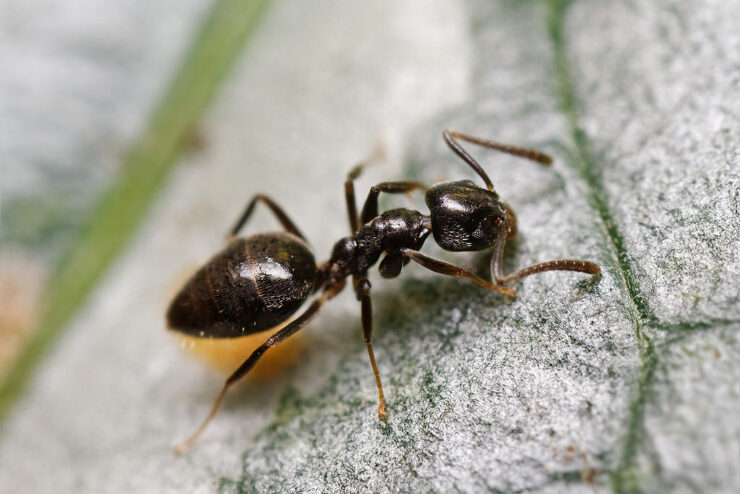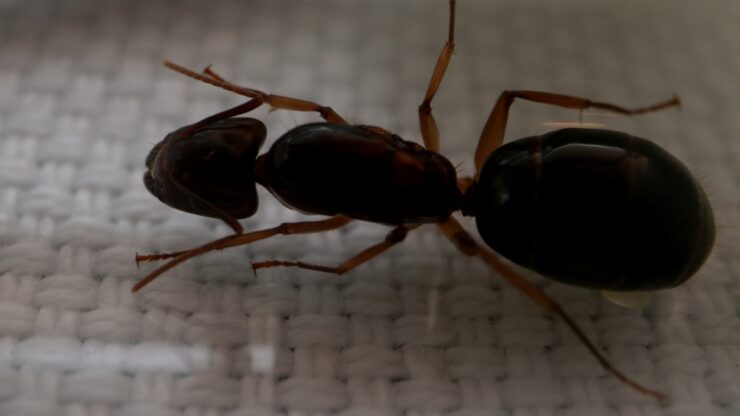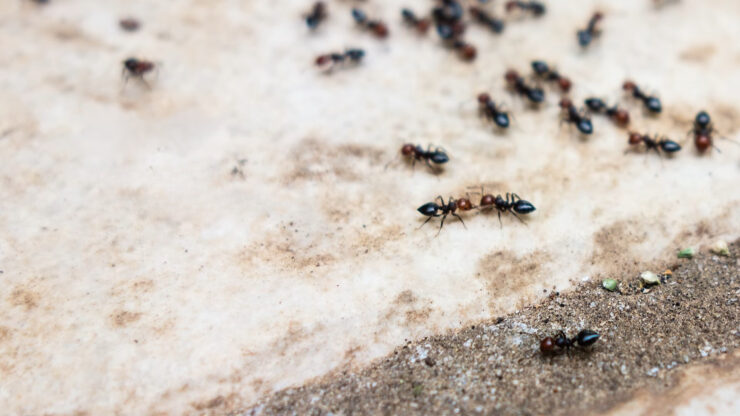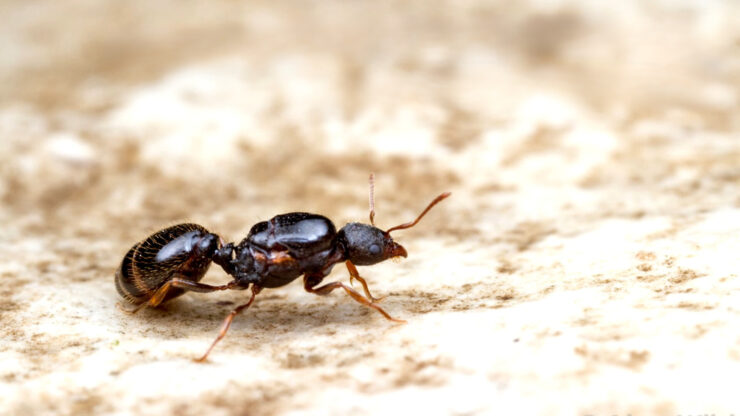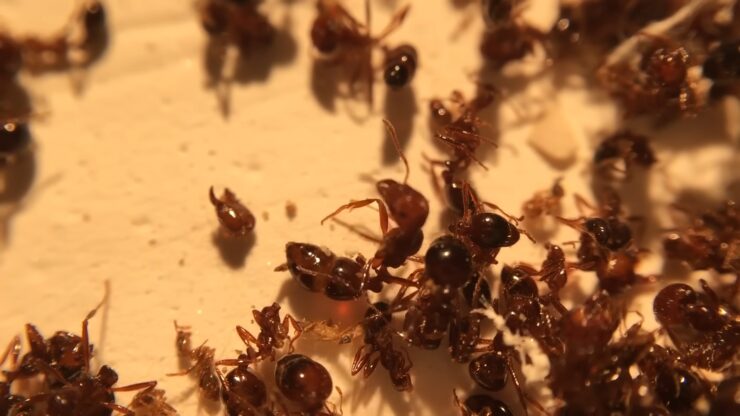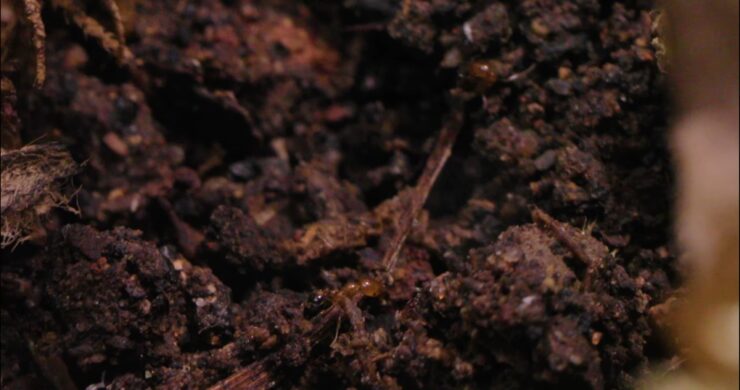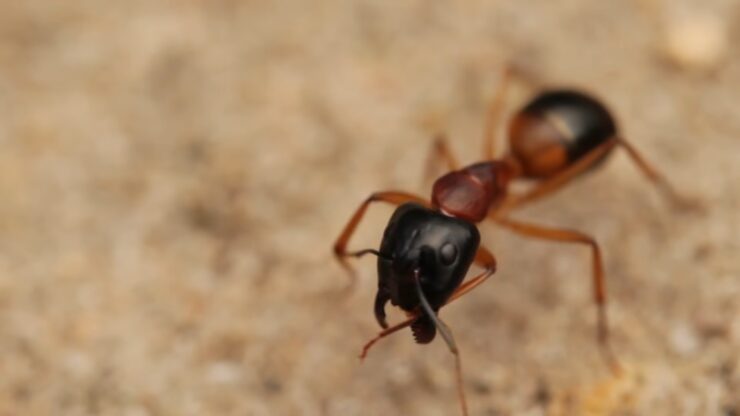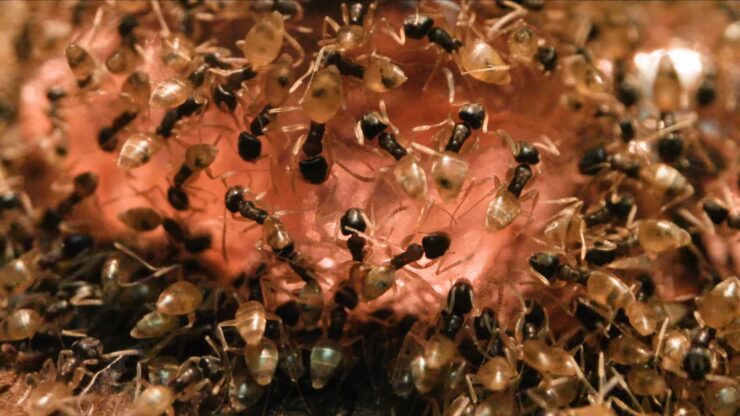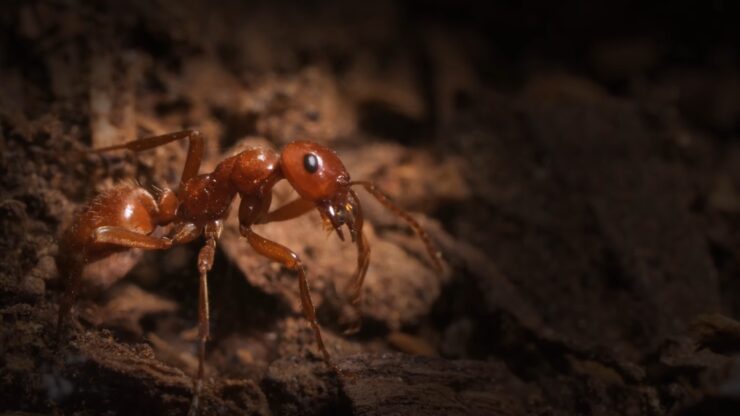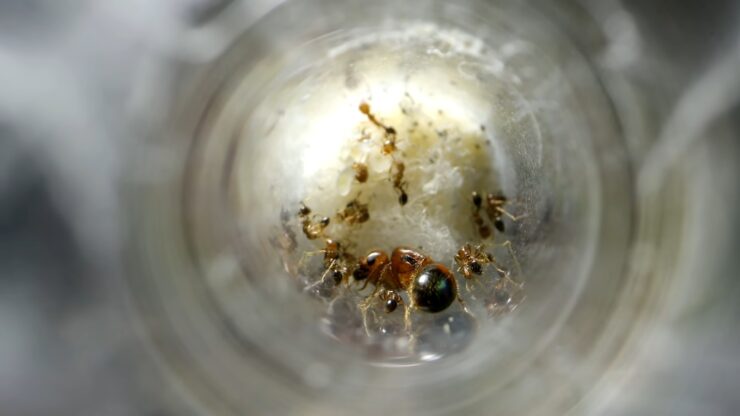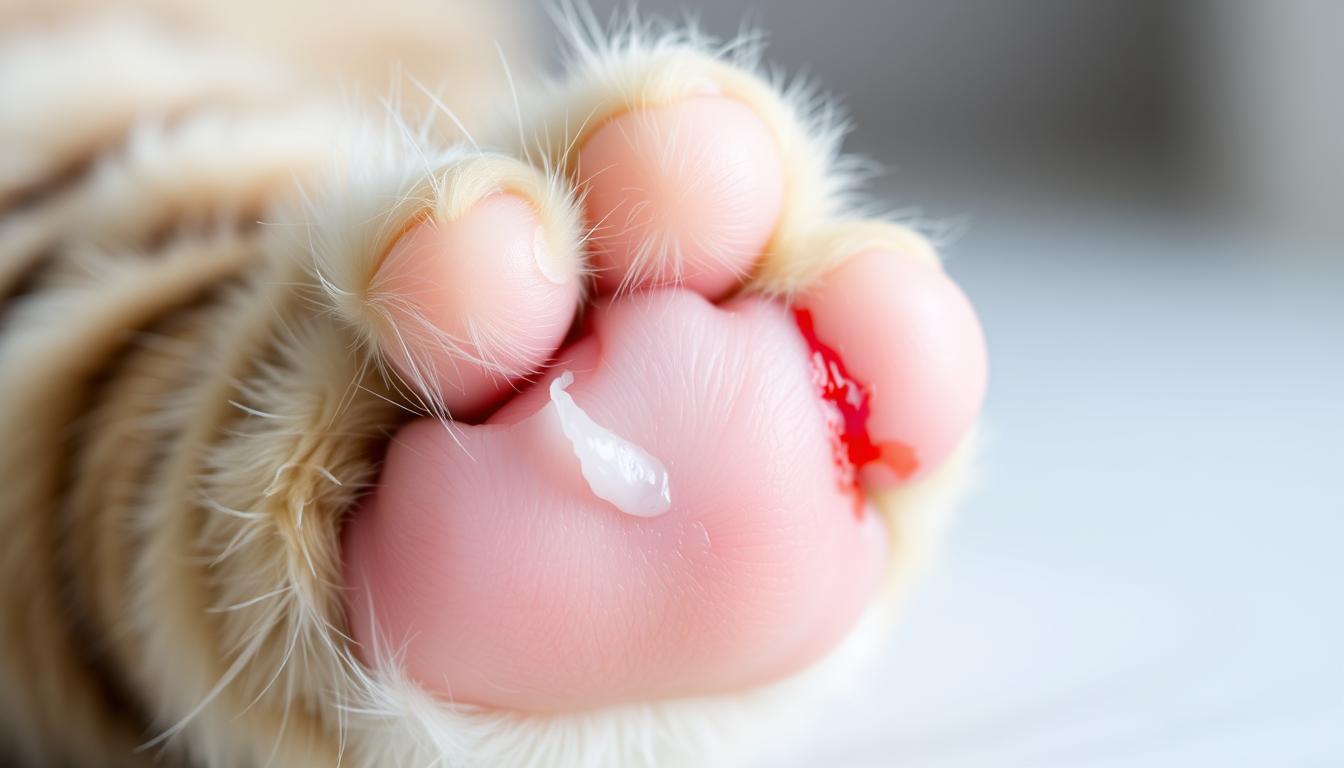With summer comes warmer weather and longer, drier days. Unfortunately, it also brings out pests such as ants. The ones most commonly found in and around homes are carpenter ants, odorous house , little black, pavement , and imported fire ants but also there might be some spiders, so watch out.
These ants invade your home through the smallest crack and crevices when in search of food leaving behind a trail for other members of the colony to follow. Of course this poses a problem to homeowners food sources when they are consistently found in grain, flour, honey, and other food items. Not to mention, these pests ability to thrive outside of your home whenever they have access to food and water.
A well-known fact is their sociality with colonies ranging at least in 100 individual in small concealed areas or within large ant mounds. While they are considered a nuisance mainly due to their numbers they can cause significant damages within time if not managed as well as inflict painful bites and stings.
Differentiating each common summer ant species can help homeowners quickly and effectively control indoor and outdoor ant infestations. Throughout this DIY guide you will find professional products and links to each ant species for complete, quality control.
10. Carpenter Ants
While some are a mere annoyance with their activities, others like the carpenter ant can wreak havoc on your property. They are notorious for tunneling through wood, which can lead to significant structural damages if left unchecked.
- Appearance: Mature carpenters measure up to 0.75 inches long. They have a prominent head followed by three segmented bodies. Their black color often leads to confusion with termites. However, a closer look reveals that carpenter ants have three body segments, while termites have only two.
- Habitat: Unlike termites, carpenters create smooth and clean tunnels, devoid of soil and other debris. They chew along or across the grain of wood, leaving behind piles of wood shavings or frass since they do not consume wood. Indoors, they often infest moist, decaying wood, especially near water sources like bathtubs or window frames. Outdoors, they prefer decaying wood such as dead trees or wood piles.
9. Odorous House Ants
Odorous house ants are aptly named for the foul odor they release when threatened or crushed. This smell, reminiscent of a rotting coconut, is their defense mechanism. But beyond this unique trait, these ants can be a real headache for homeowners due to their nesting habits.
- Appearance: Theys range from 1/16 to 1/8 inches in length and have a dark brown to black coloration. When threatened, they raise their abdomen, ready to release their signature odor.
- Habitat: Odorous house ants are particularly challenging to control because of their preference for nesting in hard-to-reach places. Indoors, they often nest in wall voids and other tight spaces near moisture sources, such as under sinks or around plumbing. Outdoors, they establish colonies under yard debris, rocks, or flower pots.
8. Little Black
Little blacks might be small in size, but they can be a big problem for homeowners. These ants are often the first species people think of when they imagine an ant infestation, and for a good reason. Their small size allows them to invade homes easily, and their sheer numbers can quickly become overwhelming.
- Appearance: As their name suggests, these ants are tiny, measuring just about 1.5 mm or 1/16 of an inch. They are primarily jet-black, though some may appear dark brown.
- Habitat: These ants are versatile and can be found both indoors and outdoors. Inside homes, they often trail along walls, especially near food and water sources. Outdoors, they can be seen forming long trails on sidewalks or near plumbing fixtures.
7. Pavement Ants
Introduction to Pavement Ants
Pavement ants, as their name suggests, are often found nesting in or under cracks in the pavement. These ants can become a significant nuisance, especially when they decide to make their way into homes. Their aggressive nature towards other ant species can also lead to ant wars on your driveway or patio.
- Appearance: Pavement are slightly larger than little black ants, measuring about 1/8 inches long. They have a brownish-black body with paler legs and antennae.
- Habitat: Outdoors, these ants are commonly found nesting in the cracks of pavements, driveways, and sidewalks. They create small mounds of dirt or sand as they excavate their nests. Inside homes, they prefer to nest near wall voids or under floors, especially if there’s easy access to food.
6. Imported Fire
Imported fire ants are not just a nuisance; they can be a genuine threat due to their painful stings. Predominantly found in the southern parts of the United States, these ants are aggressive and can cause significant discomfort to those they sting.
- Appearance: Imported fire ants have a reddish-brown head and thorax with a darker abdomen. They can be distinguished from native fire ants by the three-tooth-like projections in front of their head. Their antennae are clubbed at the tips and consist of 10 segments.
- Habitat: They prefer open, sunny areas. Their mounds can often be found beside sidewalks, near home foundations, or even under trees. It’s essential to approach these mounds with caution, as the ants can swarm and sting if they feel threatened.
5. Pharaoh Ants
Pharaoh ants are a common indoor nuisance, especially in hospitals and other healthcare facilities. They are attracted to sweet foods and can contaminate food sources, making them a significant concern in homes as well.
- Appearance: These ants are tiny, measuring about 1/16 inch in length, with a yellow or light brown coloration.
- Habitat: Pharaoh ants prefer warm, humid areas. Inside homes, they can be found nesting in wall voids, under appliances, or even inside insulation. Due to their preference for warmth, they are often found near heating systems.
4. Argentine
Argentine ants are known for their massive colonies, which can contain thousands of ants. They are particularly problematic in the summer months when they actively forage for food.
- Appearance: These ants are about 1/8 inch long with a shiny brown color. They have a noticeable musty odor when crushed.
- Habitat: Argentine ants are primarily outdoor pests, often found in moist environments. They build shallow nests under stones, boards, or the edges of sidewalks. However, during dry or hot periods, they can invade homes in search of water.
3. Ghost Ants
Ghost ants get their eerie name from their translucent legs and abdomen, which can make them hard to spot. These tiny invaders are known for their love of sweet foods and can be a real headache when they decide to invade homes.
- Appearance: Ghost are tiny, measuring about 1/16 inch. Their head and thorax are dark brown, but their legs and abdomen are almost transparent, giving them a “ghostly” appearance.
- Habitat: These ants prefer warm, humid environments. Inside homes, they can often be found in kitchens and bathrooms, trailing along sinks, bathtubs, and counters. Outdoors, they nest under rocks or logs, especially if there’s moisture.
2. Thief
Thief ants have earned their name due to their sneaky behavior of nesting near other ant colonies and stealing their food. They are one of the smallest household ants and can easily invade homes, often going unnoticed until their numbers become overwhelming.
- Appearance: Thief ants are minuscule, measuring just about 1/32 inch. They have a yellow to light brown coloration, making them even harder to spot on light surfaces.
- Habitat: These ants are versatile in their nesting habits. They can nest both indoors and outdoors. Inside homes, they prefer hidden areas like wall voids or under appliances. Outdoors, they can be found under rocks or in soil, often near other ant colonies from which they steal food.
1. Acrobat Ants
Acrobat got their name from their unique behavior of raising their abdomen over their head and thorax when disturbed, resembling an acrobat. While they aren’t as common as some other household ants, they can still pose a problem when they decide to invade.
- Appearance: These ants measure about 1/8 inch in length and can range in color from yellowish-brown to dark brown. Their most distinguishing feature is their heart-shaped abdomen, which they raise when threatened.
- Habitat: Acrobats prefer moist environments. Outdoors, they often nest in rotting logs, under rocks, or in tree stumps. When they invade homes, they are attracted to damp areas, often resulting from water leaks, such as around windows or pipes.
Prevention and Control Measures
While identifying and understanding the different types is crucial, knowing how to prevent and control them is equally important. Prevention is always better than cure, and by taking certain measures, homeowners can significantly reduce the chances of an ant infestation.
- Seal Entry Points: Regularly inspect your home for cracks, crevices, and gaps, especially around windows, doors, and foundations. Sealing these entry points can prevent ants from entering your home.
- Maintain Cleanliness: They are attracted to food sources. Ensure that your kitchen and dining areas are clean. Wipe down counters, store food in airtight containers, and promptly clean up any spills.
Natural Ant Repellents
Nature provides us with several ingredients that act as natural ant repellents. These can be a safer alternative, especially for households with kids and pets.
- Lemon Juice: The acidic property of lemon juice acts as a deterrent for ants. Wiping down surfaces with lemon juice can repel ants.
- Peppermint Oil: A few drops of peppermint essential oil at entry points can act as a natural barrier. They dislike the strong scent of peppermint.
When to Seek Professional Help
Sometimes, despite our best efforts, ant infestations can get out of hand. In such cases, it might be time to call in the experts.
- Extensive Infestation: If you notice large colonies or mounds, or if the infestation keeps recurring despite measures, it’s a sign you might need professional intervention.
- Structural Damage: Carpenter, in particular, can cause structural damage. If you suspect such damage, it’s essential to get a professional assessment.
Benefits of Professional Ant Control
While DIY methods can be effective, there are certain benefits to seeking professional help:
- Expertise: Professionals have the training and knowledge to identify and treat different ant species effectively.
- Safety: Professionals use treatments that are safe for your home environment, ensuring no harm to your family or pets.
FAQ
Why are ants more active during the summer?
They are ectothermic, meaning their body temperature is regulated by the external environment. During summer, the warm temperatures increase their metabolic rate, making them more active in foraging for food and expanding their colonies.
Are there any health risks associated with ants?
While most ants are harmless, some, like the imported fire ants, can deliver painful stings. Additionally, ants can contaminate food, and some people might be allergic to ant bites or stings, leading to reactions.
How can I differentiate between species?
Ant species can be differentiated based on size, color, habitat, and behavior. For precise identification, capturing a few ants and consulting with a pest control expert can be helpful.
Do they bite or sting?
Not all ants bite or sting. While species like carpenter ants can bite, others like the imported fire can sting. Some, like the odorous house, are more of a nuisance and don’t typically bite or sting.
How do ants communicate with each other?
They communicate using pheromones, which are chemical signals. When an ant finds a food source, it leaves a pheromone trail for others to follow. They also use pheromones to alert danger, find mates, and more.
Can ants damage plants in my garden?
Some ant species, like the aphid-farming, can indirectly harm plants. They protect and farm aphids for their honeydew, and in turn, the aphids feed on plant sap, which can weaken the plant.
How long do they live?
The lifespan varies by species and role. Worker ants typically live for a few months, while queen can live for several years.
Do they sleep?
They don’t sleep like humans do, but they have resting periods where they reduce their activity and conserve energy. These resting periods are short and frequent.
Conclusion
While small, can pose significant challenges for homeowners. However, with knowledge, preventive measures, and timely action, these challenges can be overcome. Whether you choose DIY methods or professional help, the key is to act quickly and decisively. With the insights provided in this guide, you’re now better equipped to handle any ant-related issues and enjoy a peaceful, ant-free summer.

